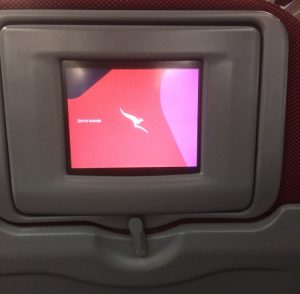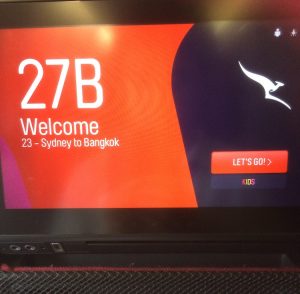Qantas is pausing its Airbus A330 refurbishment program as the airline considers whether to extend the leases of two A330-200s.
The A330-200s – VH-EBL and VH-EBG – are the two remaining aircraft in the fleet of 10 A330-300s and 18 A330-200s yet to be fitted with new Thompson Aero Seating business class seats, an updated economy cabin and new Panasonic inflight entertainment systems throughout the cabin.
Instead, the pair of Airbus widebodies have angled lie-flat SkyBeds in business class in a 2-2-2 configuration and previous generation Rockwell Collins seat-back inflight entertainment (IFE).
Australian Aviation understands that because the leases on the two aircraft are close to expiry, Qantas has taken the opportunity to re-evaluate its widebody fleet needs for the period ahead.
While no decision has been made either way, the move to pause the A330 refurbishment program to mull over the future of these two aircraft highlights the ongoing softness in the resources sector, given the A330-200s are predominantly used on domestic trans-continental routes between Perth and Australia’s east coast capitals.


As Qantas has reduced widebody operations out of Perth, it has redeployed aircraft onto international routes. The most recent examples are a return to Sydney-Beijing from January 2017 using A330-200 equipment and a resumption of Melbourne-Tokyo Narita nonstop flights from December.
Further, the impending arrival of Boeing 787-9s from October 2017 and what routes the aircraft might eventually be used on – ultra long-haul flights such as Perth-London, Melbourne-Dallas/Fort Worth and Sydney-Chicago have been regularly mentioned as potential new services with the Dreamliner – has also given Qantas top brass the opportunity to reconsider how many A330s will be required.
Both aircraft are less than 10 years old – VH-EBG rolled off the Airbus production line at Toulouse in late 2007, with VH-EBL following about a year later. Should Qantas decide the pair is required for its future network, the aircraft would then be reconfigured with the same cabin products and amenities that passengers currently experience on the rest of the A330 fleet.
In 2015, Qantas returned two A330-200s – ex-VH-EBH and ex-VH-EBI – to CIT Aerospace upon the expiry of their leases, with the aircraft acquired by the Royal Australian Air Force for conversion to KC-30A tanker-transports. The conversion is being conducted by Airbus Defence and Space at Getafe, Spain.
It is a similar story at Virgin Australia, which is also planning to take some widebody flights off the Perth route. The airline will launch Perth-Abu Dhabi nonstop flights from June 2017 as part of a significant shakeup of its long-haul network. The three-times weekly service was expected to result in about 3.5 fewer return services a week between Perth and the east coast. And there could be more A330-200s redeployed internationally should Virgin chose the type for its launch of Hong Kong and Beijing services, also due to begin from June 2017.
“Redeploying widebody aircraft from the domestic Australian market has been a priority following the downturn in the resource boom that was concentrated in Perth and drove widebody service between Perth and cities in eastern Australia,” aviation thinktank CAPA – Centre for Aviation wrote in a research note dated September 28.
“The resource boom coincided with a capacity war between Qantas and Virgin that has since subsided. Qantas has moved faster and more deeply to reduce domestic widebody services in both East-West and Triangle markets.”










